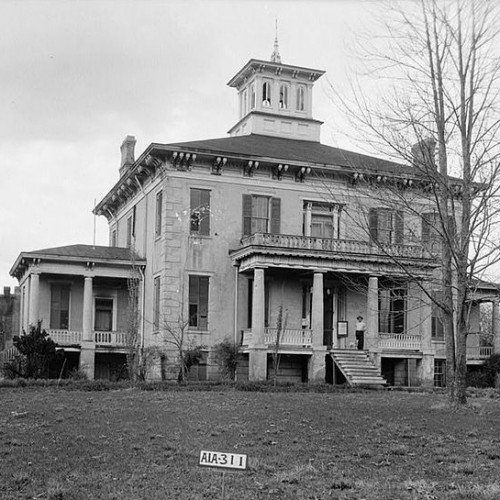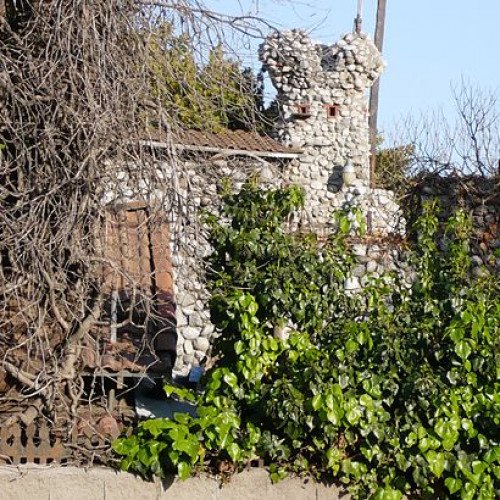Castles of "United States" ROCKY HILL CASTLE vs RUBEL CASTLE

ROCKY HILL CASTLE
Rocky Hill Castle, also known simply as Rocky Hill, was a historic plantation and plantation house between Town Creek and Courtland, Alabama, United States. Once famed in Alabama for its architecture, it was an unusual mixing of neoclassical and picturesque aesthetics in one plantation complex. The house and tower suffered from neglect during much of the 20th century and were subsequently demolished in the 1960s. Much folklore surrounds the site, with Rocky Hill Castle being the subject of numerous ghost stories. The most notable story, "The Ghost of the Angry Architect", was published in Kathryn Tucker Windham and Margaret Gillis Figh's 1969 work 13 Alabama Ghosts and Jeffrey. The plantation at Rocky Hill Castle was founded by James Edmonds Saunders in the mid-1820s, shortly after he and his wife came to Alabama from their native Georgia. Saunders, born on May 7, 1806, was a planters and attorney. He established his plantation 4 miles (6.4 km) from that of his father, Turner Saunders, and his Saunders Hall plantation. In the years after coming to Lawrence County Saunders practiced law in nearby Courtland. He eventually amassed 640 acres (260 ha), centered on the hill that his house sat upon. Desiring a grander dwelling, Saunders demolished this earlier house and began building Rocky Hill Castle in 1858. The American Civil War put an end to construction in 1861, although the estate was largely complete by that time. The house served as a Confederate hospital during the war, with several soldiers buried nearby in the Saunders' family cemetery. The plantation passed through many owners following the death of James Saunders in 1896. The last Saunders to own it was James Saunder's grandson, Dudley Saunders. Saunders and his family are alleged to have abruptly abandoned Rocky Hill Castle in the 1920s, purportedly after ghostly activity.
Statistics for this Xoptio

RUBEL CASTLE
Rubel Castle (also known as Rubelia), was established in Glendora, California, by Michael Clarke Rubel (April 16, 1940 – October 15, 2007), and is currently owned and operated by the Glendora Historical Society. It has been called "a San Gabriel Valley version of Watts Towers." Rubel purchased a 1.7 acre citrus orchard on which the structure resides in 1959. He and his friends completed construction in 1986. Rubelia could be thought of as the first major recycling project in the United States. Rubel Castle was constructed partly out of concrete but also out of scrap steel, rocks, bedsprings, coat hangers, bottles, and other repurposed materials that Rubel salvaged from the neighborhood as ranches and barns were giving way to tract houses. Chickens and other animals are frequently sighted. In 1959, Rubel bargained for the defunct Albourne Rancho property and took up residence in the huge citrus packing house. Rubel's father, Henry "Heinz" Scott Rubel, had been an Episcopal priest and gag writer for Joe Penner, a radio comedian and movie star. In the 1960s, Rubel's mother, one-time Broadway actress and Greenwich Village Follies dancer Dorothy Deuel Rubel, moved into the packing house with her son. She used the venue to throw parties. Guests arrived weekly by the hundreds, arriving inside a tin fruit packing house which had been transformed into a giant dance hall. Inside, surrounded by art and antique furniture remaining from Rubel ancestors, they mingled and danced to a small orchestra. The parties led to the packing house becoming known as "The Tin Palace."